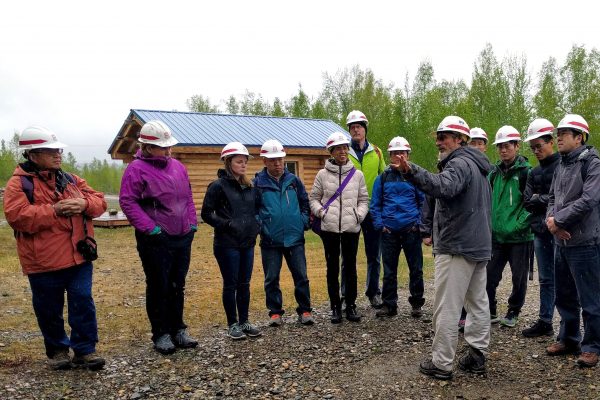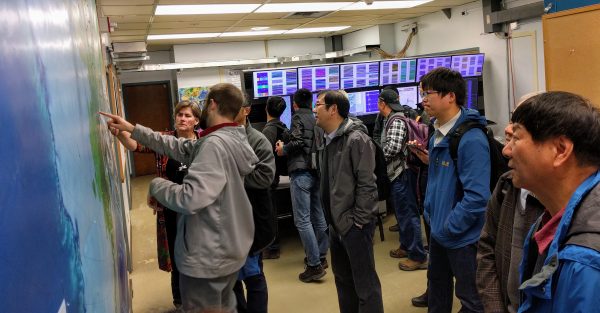Chinese scientists visit UAF to learn from EarthScope project
May 24, 2017
Lea Gardine
907-474-7664

Scientists developing a project to study the Earth’s crust in China are looking toward EarthScope, a similar project in the U.S., as a model for multidisciplinary science and open data sharing.
Representatives from the SinoProbe project visited the University of Alaska Fairbanks Geophysical Institute this week after the 2017 EarthScope National Meeting in Anchorage. The 16 Chinese scientists toured the EarthScope National Office, which is housed at UAF, as well as other local research facilities.
The original SinoProbe project is winding down to make way for a new, larger version, called SinoProbe-II.
"It is part of a Chinese national priority to become the world leader in subsurface imaging by 2030,” said EarthScope National Office director and UAF geophysics professor Jeffrey Freymueller.
SinoProbe scientists wanted to learn about the U.S. program’s emphasis on research collaboration, data sharing and public involvement.
EarthScope data is available to the public on the internet, Freymueller said. That’s not the case with all of the SinoProbe data. It’s shared between participants and collaborators.
"SinoProbe scientists have told me 'You guys can’t get rid of EarthScope — we use that data all the time,'” said Freymueller. “We are an example of best practices on how we deal with open data.”
SinoProbe-II is one part of large, ongoing scientific and infrastructure investments made by the Chinese government. For example, imaging information from SinoProbe complements the building of new subway lines; this geophysical information is especially important because one to two new lines are installed each year in Beijing alone, according to Freymueller.

"In terms of scientific advancement, essentially it is just a matter of time before they exceed us,” said Freymueller.
Because the Chinese are investing so much in science, this visit is not only a good opportunity to show off EarthScope’s work but also to pave the way to future collaboration, Freymueller said.
In addition to touring the EarthScope office, the group met with staff of the Alaska Earthquake Center and Alaska Volcano Observatory. GI researchers also took them on tours of the U.S. Army's Cold Regions Research and Engineering Laboratory Permafrost Tunnel Research Facility and the Geophysical Institute's Poker Flat Research Range.
“The more we tell them about the GI, the more we may open potential doors to meet and collaborate in the future,” said Freymueller.
ADDITIONAL CONTACT: Jeffrey Freymueller, 907-474-7286, jfreymueller@alaska.edu
ON THE WEB: EarthScope Project: http://www.earthscope.org/


